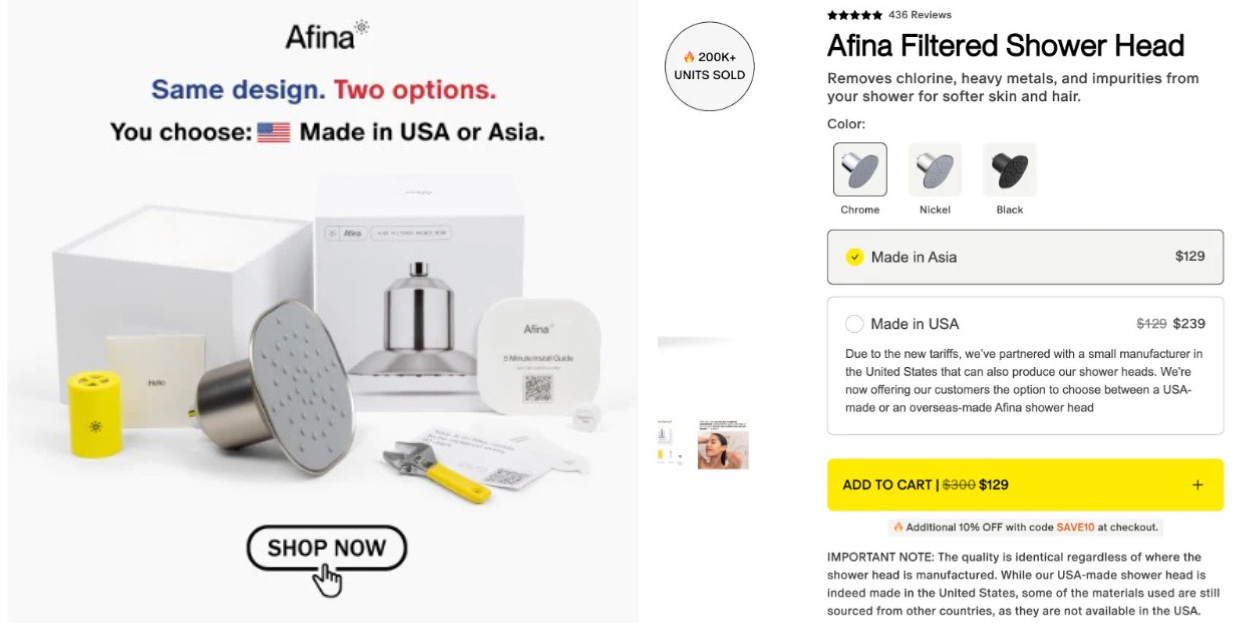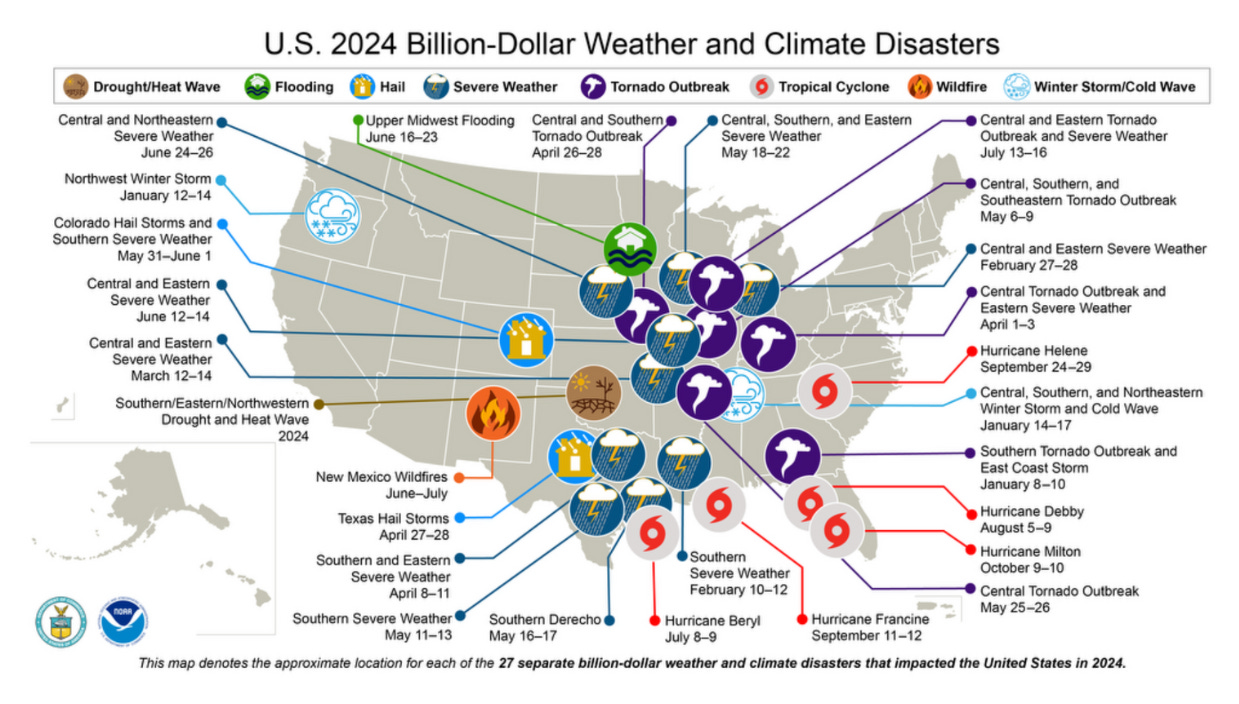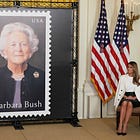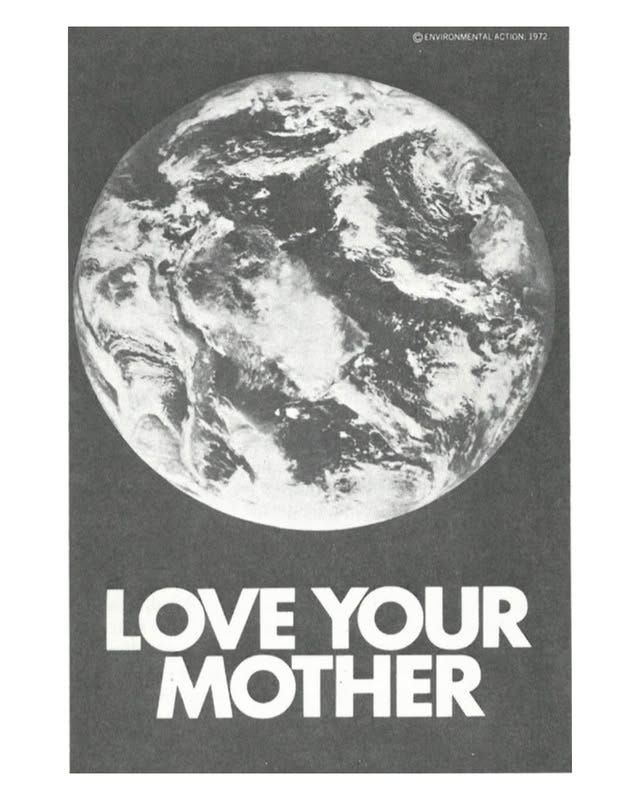Even in a trade war, “Made in USA” marketing only goes so far
Plus: The federal government is killing NOAA’s “billion-dollar disasters” database. Here’s what we’re losing.
Even in a trade war, “Made in USA” marketing only goes so far
Volkswagen’s all-electric ID.4 has an estimated range of 291 miles, heated front seats, 10-color ambient lighting, and park assist plus with memory parking, a feature that lets the car learn and execute specific parking maneuvers on its own. It was also made in Tennessee.
To show off the car’s smart parking capabilities in a new commercial, Volkswagen shows a woman backing into a long, winding, steep driveway with no hands to the astonishment of two young bystanders. And to show off the car’s U.S. city of origin, the narrator of the German automaker’s ad says the ID.4 is “proudly assembled in Chattanooga.”
President Donald Trump’s tariffs have put a premium on American-made products, even if he’s shown a preponderance for walking tariffs back as he did with a 90-day pause of some on China Monday. Still, brands with American-made goods are leaning into their competitive advantage. Depending on their price tags, though, consumers might not respond the way they think.
A Gallup poll released last month found 70% of U.S. adults believe tariffs will cost the U.S. more money in the short term and 62% say the same of the long run. For now, then, highlighting a product’s domestic production seems like a selling point. Businesses hope investors like it too. On its most recent earnings call, CVS Health emphasized the tariff-proof parts of its own revenue model.
The company sources “the vast majority of our front store items in American-based companies,” CVS Health CEO David Joyner said on the call earlier this month, and since Danish drugmaker Novo Nordisk makes its weight-loss drug in the U.S., it limits the impact of tariffs for the pharmacy chain. “Where we are looking at impacts, we’re looking at alternative sourcing and or diversifying the suppliers,” Joyner said.
While Americans have told pollsters they’re willing to pay more for domestic-made goods, one shower head company put that theory to the test and found what Americans say and how they shop are two very different things. Afina, which sells filtered shower heads produced in China and Vietnam, found a U.S.-based supplier who could produce its products for nearly three times the cost. The company upcharged the U.S.-made shower head to maintain its margins, and after running an A/B test selling a foreign-made shower head for $129 and one labeled “Made in USA” for $239, they found zero people bought the American version, even after testing for other factors, like color, copy, and layout.
“For a moment, we thought we’d made a technical error. We hadn’t,” the company said in a blog post. “This wasn’t a failure of marketing — it was a referendum on price.”
In theory, many American consumers like to think they’re willing to pay more for American-made goods, but hammered by years of inflation, Afina’s A/B test shows there are limits. “Proudly assembled in Chattanooga” only means something for companies that can also keep costs down.
As Afina said in its blog post, small brands “want to manufacture here. We’re willing to invest. But without serious shifts — in consumer incentives, automation, and trade policy — the math doesn’t work. Not for us. Not for our customers.”
“If policymakers and pundits want to rebuild American industry, they need to grapple with this truth: idealism doesn’t always survive contact with a price tag,” the company said.
Previously in Yello:
Take the Yello reader survey: It’s quick and it helps me improve this newsletter for you 👇
The federal government is killing NOAA’s “billion-dollar disasters” database. Here’s what we’re losing.

It’s about to get a whole lot harder and more expensive to track the cost of extreme weather events.
The National Oceanic and Atmospheric Administration, or NOAA, announced last week it would no longer update a number of databases it operates, including one that tracks America’s most destructive storms and climate disasters. The agency’s Billion-Dollar Weather and Climate Disasters database has tracked 403 weather and climate disasters that caused at least $1 billion in damage in the U.S. since 1980, including 27 events in 2024. Together, the costs cumulatively total more than $2.9 trillion over 44 years.
As the Trump administration has slashed federal agencies and aimed to cut government priorities around topics like climate change, NOAA has become a target. It’s already shut down other products because of staffing shortages, according to CNN, which first reported the database being decommissioned, and it’s made moves to identify grants that use phrases like “climate science,” “carbon,” and “pollution.”
Though the billion-dollar-damage database remains archived, NOAA’s site now has a banner telling visitors it will no longer update so as to be in “alignment with evolving priorities, statutory mandates, and staffing changes.” A current NOAA employee told CBS News the database was considered “not core” to the agency’s mission, and its lead researcher resigned and took a buyout last month.
The database is information-rich and visual, with maps and charts that can be updated to isolate data from disasters including droughts, floods, freezes, severe storms, tropical cyclones, wildfires, and winter storms. It’s a good example of government data designed for accessibility and transparency, but for insurers, the true value was the raw numbers. With the database shut down, insurance companies now expect to pay up to buy private data that was once public.
“It’s going to come from private sources who naturally are going to charge more for it,” Brian Espie, the chief underwriting officer at the insurance company Kettle, told the trade publication Insurance Business. “It requires us going to more sources, paying more for that data, and then putting more internal investment into pulling and aggregating that data together.”
If 2025 is anything like last year, the U.S. can expect more than two dozen disasters to cost more than $1 billion each, but this year will be different. Unlike 2024, there won’t be any NOAA researchers tracking it, and unfortunately for those paying their insurance premiums, those costs could go up.
Have you seen this?
Google’s “G” logo just got prettier. In a new logo quietly rolled out across iOS and Pixel, the search giant ditches its color-blocked “G” for gradients. [Fast Company]
Trump jets to Middle East. Trump is in the Middle East for the first foreign trip of his second term, and it’s overshadowed by a jumbo ethics problem: a $400 million jet to be gifted by the Qatari royal family. Meanwhile, this morning and every morning, a bipartisan workout group hits cardio and weights together in the House gym. [Whig]
Take the Yello reader survey: How can I make this newsletter better for you?
History of political design
"Love Your Mother" (1972). The poster was designed for the group Environmental Action by Jerry Rotondi and Bob Matheo.
Like what you see? Subscribe for more:









